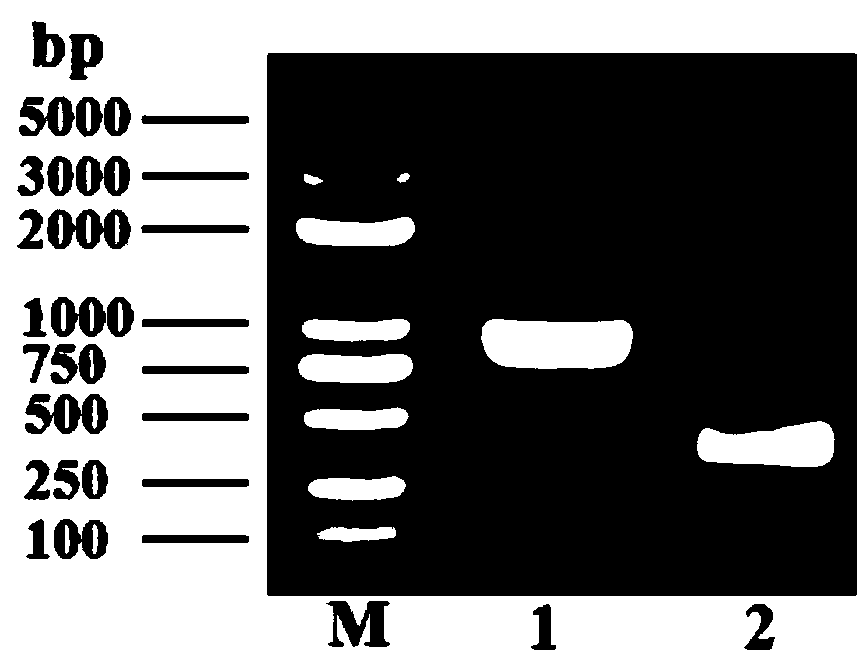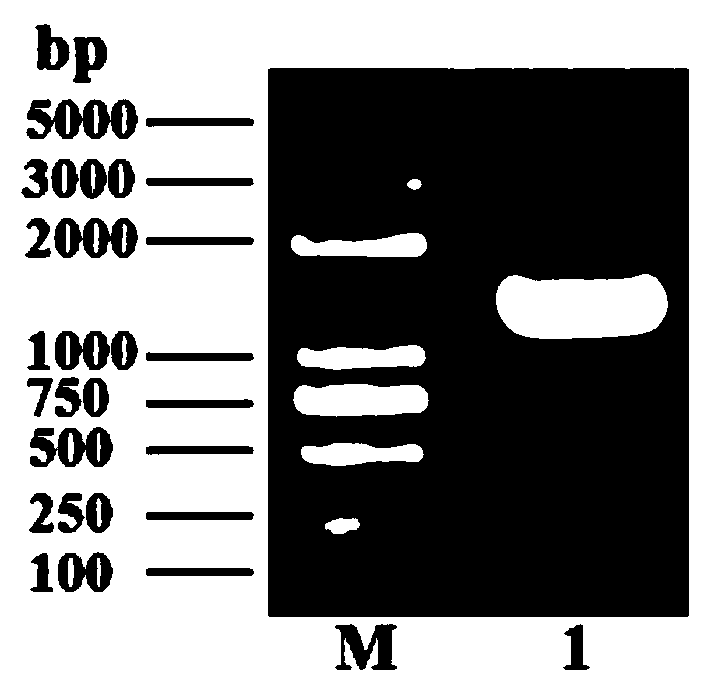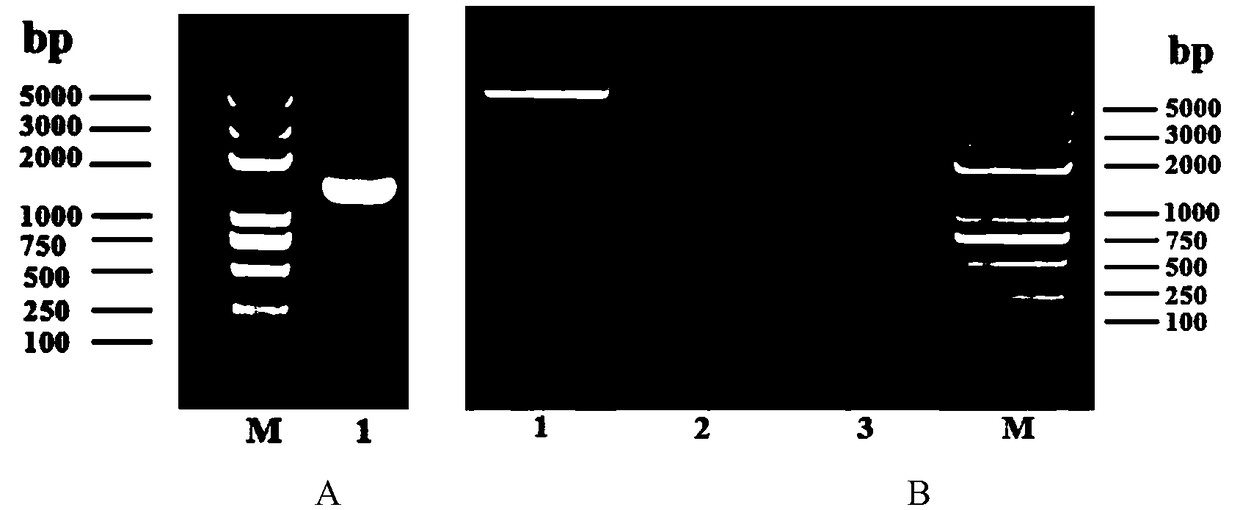Vector used for inserting exogenous gene in riemerella anatipestifer genome, and method
A technology for Riemer's duck disease and foreign genes, which can be applied to other methods of inserting foreign genetic materials, using vectors to introduce foreign genetic materials, and genetic engineering, etc., can solve problems such as adverse animal welfare, improvement, time-consuming and laborious problems, etc.
- Summary
- Abstract
- Description
- Claims
- Application Information
AI Technical Summary
Problems solved by technology
Method used
Image
Examples
Embodiment 1
[0033] The generation of embodiment 1.pheS mutant gene
[0034]Use primers pheS up p1: 5'-catgccatggcaatgttagaatacattgacgcatatc-3' (SEQ ID NO.1), pheS up p2: 5'-cccataccaaatccatagccg-3' (SEQ ID NO.2); pheS down p1: 5'-cggctatggatttggtatggg-3 ' (SEQ ID NO.3), pheS down p2:5'-ggactagtcccagacttgttgattttggacg-3' (SEQ ID NO.4) amplifies the pheSup part (914bp) and the pheSdown part (418bp), and the PCR amplification conditions are as follows: (1 ) 98°C pre-denaturation for 30s; (2) 98°C denaturation for 10s, (3) 55°C annealing for 30s, (4) 72°C extension for 30s, (2)-(4) cycle 30 times; (5) 72°C extension for 7min, (6) Store ∞ at 22°C; amplification results are as follows: figure 1 As shown, the two fragments are then fused using the method of fusion PCR, and the fusion result is as follows figure 2 As shown, the pheS mutant gene, namely pheS*, was obtained, the nucleotide sequence of which was shown in SEQ ID NO.5, wherein the 301st codon encoding amino acid was mutated from GC...
Embodiment 2
[0035] Example 2. Check whether the mutant gene can be used as a reverse screening marker
[0036] The fusion fragment was cloned into the shuttle plasmid pLMF03 (Genbank: KU997673) to obtain the recombinant plasmid pLMF03::pheS*, using the sequences shown in SEQ ID NO.1 and SEQ ID NO.4 for PCR amplification, and using NcoI and Sp e I Carry out enzyme digestion identification, the identification results are as follows image 3 shown. Then it was transformed into R. anatipestife ATCC by conjugative transfer, and the empty vector of the shuttle plasmid pLMF03 was used as a control to obtain strain R. anatipestife pLMF03::pheS* and strain R. anatipestife pLMF03 respectively. The strains R. anatipestife pLMF03 and R. anatipestife pLMF03::pheS* were cultured in GCB / cfx with different concentrations of p-cl-Phe (0mM, 10mM, 13mM) for 18h in an incubator at 37°C, and the results were as follows: Figure 4 shown. The results showed that when the concentration of p-cl-Phe was 13mM, t...
Embodiment 3
[0037] Example 3. Construction of suicide vector pOES for genomic tag insertion
[0038] Plasmid pLMF03::pheS* was used as a template, and primers were used: EXpheS*p1: 5'-acgcgtcgacatttcaaaaatttaacttaaaccactg-3' (SEQ ID NO. 6), EXpheS*p2: 5'-gctctagagccctttttttgttacttatagcg-3' (SEQ ID NO. 7) , the high-expression promoter of the plasmid and pheS* were amplified together, and its product was named EXpheS*, and the plasmid pMM47.A was cut with PstI restriction endonuclease to remove the origin of replication ( Figure 6 , A), making it a suicide plasmid and named it pMM47.B. Then clone the EXpheS* fragment into the restriction sites SalI and XbaI of pMM47.B. The plasmid is named pOES. The specific process is as follows: Figure 5 shown. The constructed plasmid was carried out with the sequence shown in SEQ ID NO.6 and SEQ ID NO.7 for PCR amplification detection and SalI and XbaI double enzyme digestion identification ( Figure 6 , B)
PUM
 Login to View More
Login to View More Abstract
Description
Claims
Application Information
 Login to View More
Login to View More - R&D Engineer
- R&D Manager
- IP Professional
- Industry Leading Data Capabilities
- Powerful AI technology
- Patent DNA Extraction
Browse by: Latest US Patents, China's latest patents, Technical Efficacy Thesaurus, Application Domain, Technology Topic, Popular Technical Reports.
© 2024 PatSnap. All rights reserved.Legal|Privacy policy|Modern Slavery Act Transparency Statement|Sitemap|About US| Contact US: help@patsnap.com










